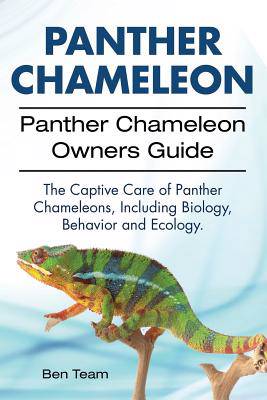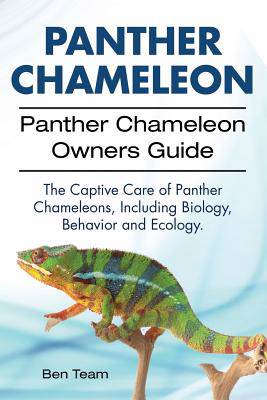
Je cadeautjes zeker op tijd in huis hebben voor de feestdagen? Kom langs in onze winkels en vind het perfecte geschenk!
- Afhalen na 1 uur in een winkel met voorraad
- Gratis thuislevering in België vanaf € 30
- Ruim aanbod met 7 miljoen producten
Je cadeautjes zeker op tijd in huis hebben voor de feestdagen? Kom langs in onze winkels en vind het perfecte geschenk!
- Afhalen na 1 uur in een winkel met voorraad
- Gratis thuislevering in België vanaf € 30
- Ruim aanbod met 7 miljoen producten
Zoeken
Panther Chameleon. Panther Chameleon Owners Guide. The Captive Care of Panther Chameleons, Including Biology, Behavior and Ecology.
Ben Team
Paperback | Engels
€ 20,95
+ 41 punten
Omschrijving
Given their unique body plans, independently mobile eyes and unthinkably long tongues, it should be no surprise that chameleons are some of the most popular lizards among reptile enthusiasts. Throw in their ability to change colors in spectacular fashion, and these lizards rise to nearly mythological levels. But this unusual biology means that these lizards require rather specific husbandry, and they are generally not suitable for beginners. Nevertheless, those with a bit of lizard keeping experience are likely to find that panther chameleons are well worth the additional effort they require. While panther chameleon husbandry can be challenging, success is likely if you are sufficiently dedicated and educate yourself about the animals. After learning about the biology, natural history and native habitats of panther chameleons, you will be better prepared to provide your pet with a suitable home, in which he can live a long, healthy life. The author, Ben Team, is an environmental educator and author with over 16 years of professional reptile-keeping experience. Ben currently maintains www.FootstepsInTheForest.com, where he shares information, narration and observations of the natural world. When not writing about plants, animals and habitats, Ben enjoys spending time with his beautiful wife. Covered in this book: - Description - Anatomy - Internal Anatomy - Biology - Behavior - Taxonomy - Phylogeny - The ideal environment - Ecology - Captive considerations - Myths and Misunderstandings - Husbandry - Enclosure - Lighting - Diet - Daily care - Monitoring - Maintenance - Acquiring - Interacting - Health - Breeding .... and much more
Specificaties
Betrokkenen
- Auteur(s):
- Uitgeverij:
Inhoud
- Aantal bladzijden:
- 146
- Taal:
- Engels
Eigenschappen
- Productcode (EAN):
- 9781911142348
- Verschijningsdatum:
- 1/02/2016
- Uitvoering:
- Paperback
- Formaat:
- Trade paperback (VS)
- Afmetingen:
- 152 mm x 229 mm
- Gewicht:
- 204 g

Alleen bij Standaard Boekhandel
+ 41 punten op je klantenkaart van Standaard Boekhandel
Beoordelingen
We publiceren alleen reviews die voldoen aan de voorwaarden voor reviews. Bekijk onze voorwaarden voor reviews.









